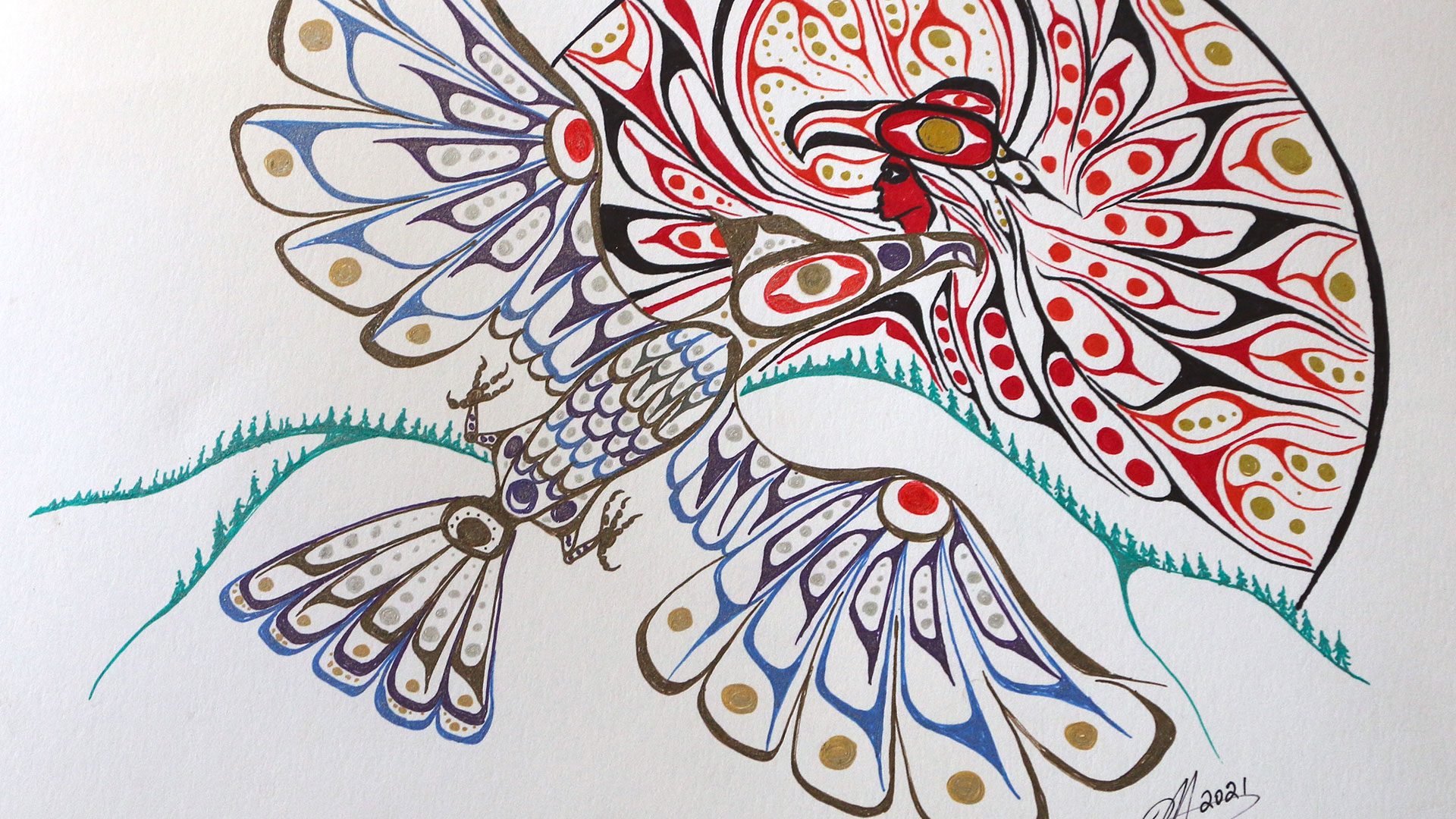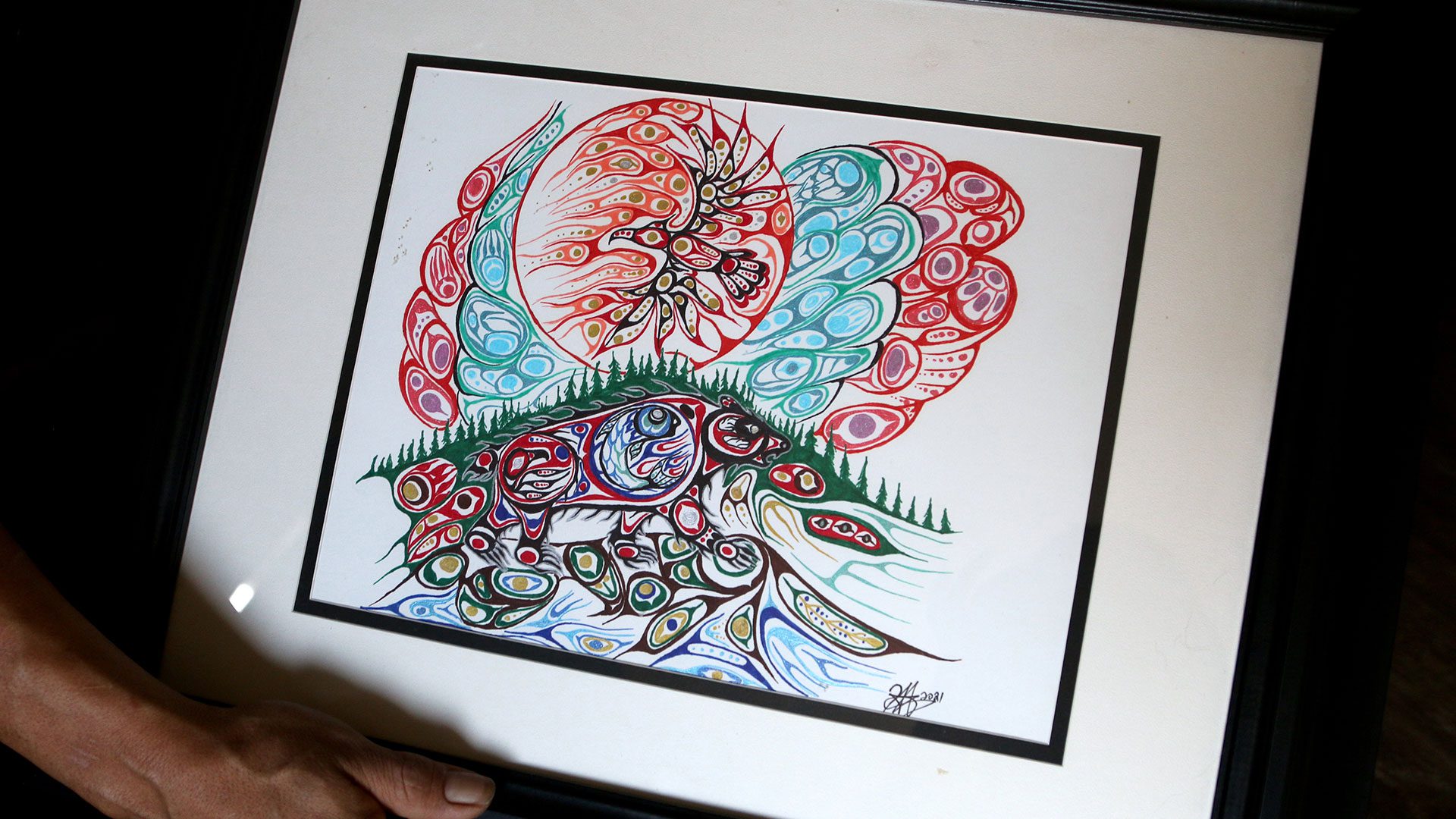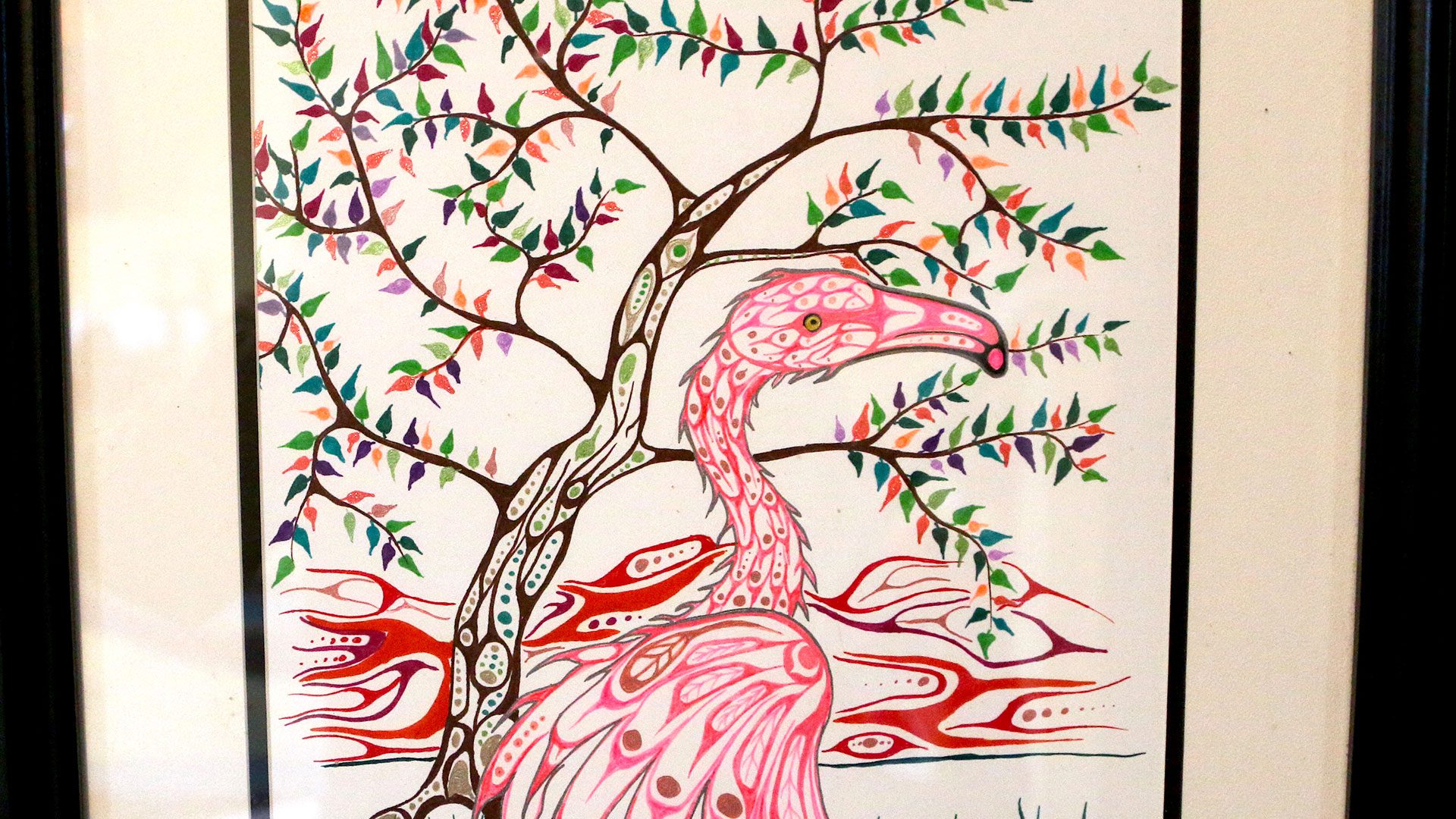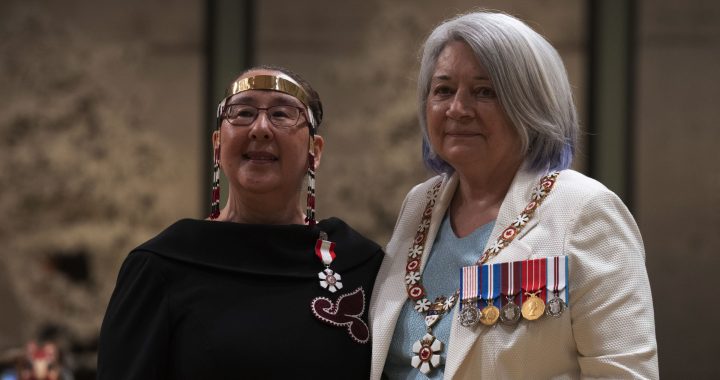
Hector Alec sits in front of his wall filled with his artwork at his home in snpink'tn (Penticton). Photo: Athena Bonneau/IndigiNews
Hector Alec, a syilx artist, recently rediscovered his passion for art after putting his pen down for nearly 40 years.
The 60-year-old’s detailed drawings, created with permanent markers, are on display at the Front Street Gallery, in snpink’tn (Penticton), and has been purchased by a neighbouring Indigenous business, in n’qmaplqs, head of Okanagan Lake (OKIB), and by friends and family.
The brightly-coloured work makes use of traditional syilx designs, patterns and elements. Using sharpies and drawing from spontaneous thought, Alec creates contemporary syilx art that depicts an array of animals and plants.
Alec, who is from snpink’tn (Penticton Indian Band), says he was interested in art from a young age. He discovered his passion for art while watching his stepfather and uncle in their studios.
“When I was really small, and he’d give me a pencil and pen. I remember I would draw block cars, and I remember the first time I figured out how to draw a face,” he says.
Much of Alec’s work now depicts birds because, to him, they represent freedom and strength.
“I used to have a motorcycle. I had two Harley-Davidsons. I love those things. I could get on them and go,” Alec says. “I love the freedom, and that’s what the birds are like. The birds are freedom, you know, wind (in) your face, and I’ve always been like that.
“I’ve been told that my artwork represents the true syilx design.”
From dormant talent to active practice

When Alec was in his twenties, he practiced art regularly and began studying to become an art teacher. He attended Emily Carr University of Art and Design, on xʷməθkʷəy̓əm (Musqueam), Sḵwx̱wú7mesh Úxwumixw (Squamish) and səl̓ilw̓ətaʔɬ (Tsleil-Waututh) territories, in what has been briefly known as Vancouver, B.C.
“But I put down the pen for quite a while,” he says.
Alec and his partner have four children who were born with exceptional needs. So, to support his family, he found work in another field, during which time his art became a hobby.
“I was a policeman at one time, but I’ve been a carpenter most of my life. I’ve always just stayed with building houses because it was comfortable, and I was feeding and raising a family,” he says.
“I would do artwork occasionally when I would have a quiet moment, but after the babies were born, I didn’t do artwork for years because I was so busy.”
Alec says that after his children grew up and as his career as a builder was gradually ending, he began thinking about returning to art.
“I was afraid. I couldn’t take a risk for a lot of years, and now I don’t have anybody to look after, I have an income, I don’t pay rent, you know, I’m free to do it now,” Alec explains.
“I lacked the confidence to realise my talent.”
But after a life-altering experience, he found the inspiration to step back into art.
In 2014, Alec wrecked his truck, resulting in him going to the hospital. But while he was there, the doctors gave him some news that shone a light onto why he hadn’t been feeling well in the months before the accident.
“The doctors took blood and then told me I might have leukemia…I got cancer,” Alec said.
Alec tells IndigiNews when he was young, he drew artistic inspiration from his emotions, such as inner pain and heartbreak, and the emotions connected to falling in love.
However, after the cancer diagnosis, he turned to art as a way to express himself and heal his heart.
“When my cancer started to progress, my artistic expression increased…now I get inspired by everything,” he says.
‘It’s up to the person’s interpretation’
Alec’s drawings often depict movement, and his hope is that viewers interpret their own stories from his work.
He starts by drawing a line, bird, or circle on high-quality artist paper and he doesn’t like to put any thought into what he is creating until it’s finished.
“Everything I draw is not pencilled in, this is all freehand. And it’s actually not planned. It’s a pure form of art,” Alec says.
Healing through art
Alec tells IndigiNews he now uses art to express himself and to channel his thoughts when he’s going through a hard time.
“Art is therapeutic because of the cancer thing, and because of what’s going through my head, it’s like, I’m creating life when I’m drawing these things,” he says.
Art is also helping him to reconnect with his Indigenous identity as a member of the syilx Nation.
“I don’t really express my nativeness in other ways. I don’t Powwow, I don’t drum. I don’t know. It’s just, it feels good. So sometimes I’ll switch off, and I’ll do holler,” he says.
Alec explains that when he or syilx men holler and yell out over the water, it is a way to talk and release to kwulencuten (Creator,) a sqilxw expression. But Alec’s version of hollering is drawing.
Now that Alec is beginning a serious career in the arts, he hopes to inspire youth to follow their dream, no matter how long it takes them to achieve it.
“I wanna share my art with as many people as I can in the world, so they can get the same feeling I get when I’m looking at it or when I’m drawing it,” he says.













